|
BULB LOG 01 5th January 2005
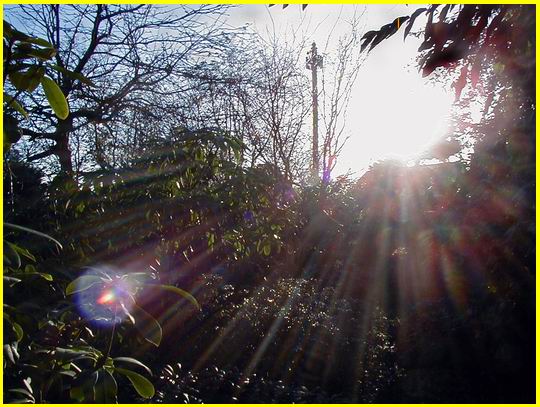
High noon 2005
This is as high as the sun gets in Aberdeen at this time of year; it hardly touches the garden as it does not rise above the trees. I wish you all a very good bulb growing year with many pleasures to come - one thing about growing bulbs is that there are always plenty delights and surprises.
I am embarking on the third year of what was to be a one year project, some 1200 pictures and around 90,000 words later can I have anything new left to say? When it comes to growing bulbs, as with most gardening, you are always learning and yes, there is always something new. Whenever something flowers for the first time, or flowers better than ever before, or dies, I have to find out why.
One of the things I intend to do this year is to look in detail at some of the basics of cultivation and I will start with compost.
Firstly for non UK gardeners, what do we mean by compost? We use this same term, compost, to cover several different types of material, which we UK gardeners seem to understand by the context it is used in.
Compost - the well-rotted remains of vegetable material from the garden compost heap. To confuse things further we have always operated two types of compost heap.
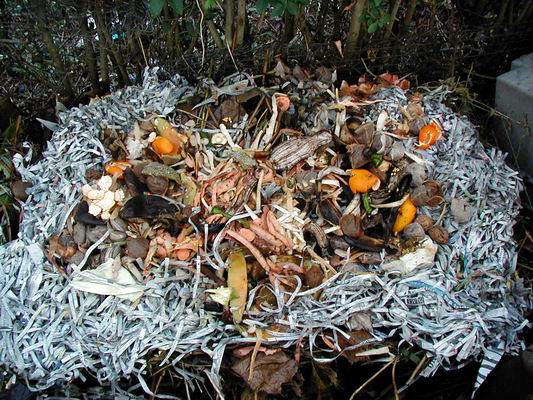
Midden
A)
The 'Midden' where we put weeds, vegetable and fruit waste from the kitchen and shredded paper. This is a slow compost heap, it does not heat up dramatically and much of the composting process is carried out by worms. We mostly use this material to enrich our light, sandy garden soil, especially when planting shrubs and bulbs that like a heavier richer soil like some of the Galanthus and Narcissus.
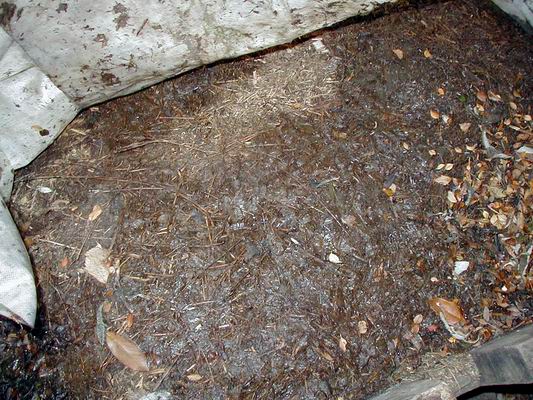
Shredded heap
B)
The Compost heap where we build at least a cubic meter of shredded cuttings very quickly. This type of heap can reach temperatures of 70C in twenty four hours and provides a great mulching material in around 6 to 9 months. If it is left for a year it is then a good alternative to leafmould.
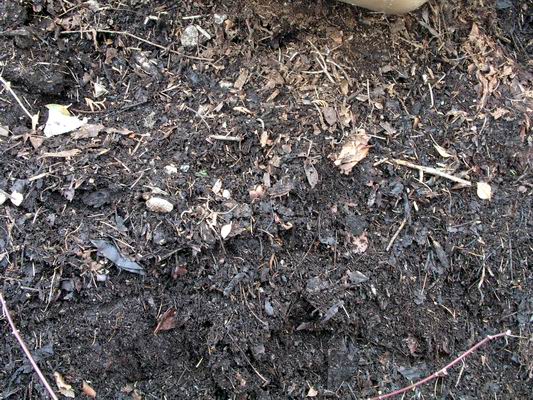
Leaf mould
C)
When I said two, I actually meant three, as we also have a separate heap for leaves which provide us with a good supply of leafmould. The secret of good and quick leafmould is not to gather your leaves too quickly, I am happy if they get a bit wet before I lift them. Make your new heap adjacent to your previous one, so the bacteria etc. are present, weigh the top down so that it gets slightly compressed, and do not let it dry out completely.
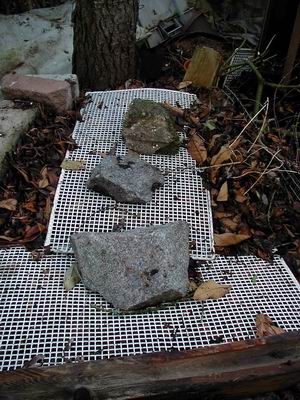
Leaf mould heap
Most of the leaves that we add are small (birch, cotoneaster, sorbus, acer, etc) and break down within 6 to 8 months.
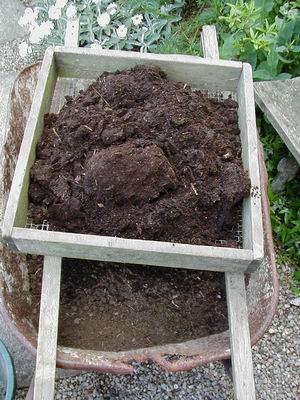
Riddled leaf mould
We rub the leaf mould through a 1cm grid before we use it.
The term compost can also be used to describe well rotted farm yard manure - this is getting to be a rare commodity nowadays.
So finally I come to the use of the term compost that we are most interested in and that is when applied to the 'potting medium'; that magic mixture that we carefully mix to enable our plants to perform to their best.
There are probably as many recipes for potting compost as there are gardeners, no there are probably more. If you understand what the plant (Bulb) requires from the potting compost you should be able to formulate your own mix using the ingredients that are available to you.
The commonly used term 'free draining and moisture retentive compost' can be confusing to new gardeners. How can it be both free draining and moisture retentive at the same time? I prefer to describe the ideal compost mix as being moisture and air retentive - roots need air as much as they need water to survive.
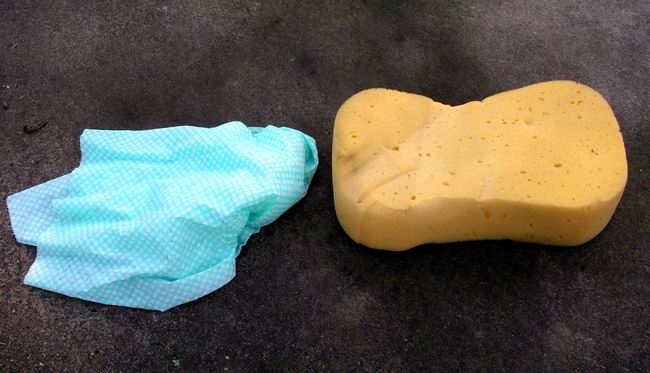
Cloth and sponge
Compare this dishcloth and sponge above. Both are very wet but the dishcloth feels unpleasantly soggy while the sponge is much nicer to handle even though it holds more water.
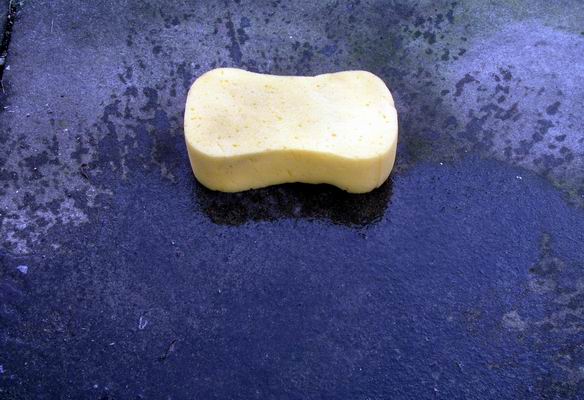
Sponge
The reason for this is because of the structure of the sponge- it holds lots of water but it still has many spaces which can hold lots of air - this is the ideal that we are trying to achieve with our potting compost mix.
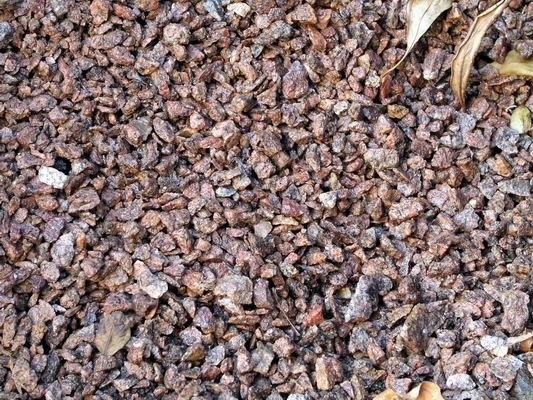
Gravel, grit
The addition of sharp gravel or grit - again two terms for the same material, is added to improve the drainage of a mixture. We use a 6mm crushed rock from a local quarry but you can buy bags of grit from most garden centres and DIY stores. The term 6mm grit refers to anything that will pass through a 6mm grid so it will contain material from 6mm down to dust. Many people prefer to get washed grit; that is grit that has had the fine rock dust washed out. I prefer to leave that material in the mix as I believe that it adds many of the trace elements essential to the plants good health. Provided of course that there is not too much of this fine material that would tend to clog the spaces between the gravel and so defeat the purpose. The irregular surfaces of this crushed rock grit also hold moisture which is readily available to the roots.
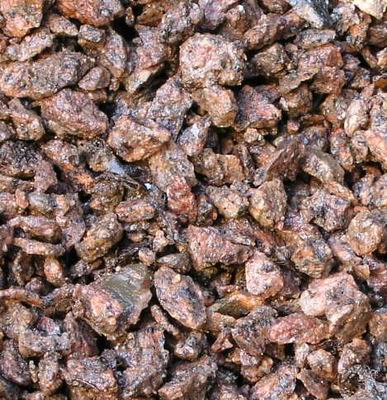
Grit
If we look closely at the grit you can see how it opens up a mixture forming air spaces between the irregular shapes.
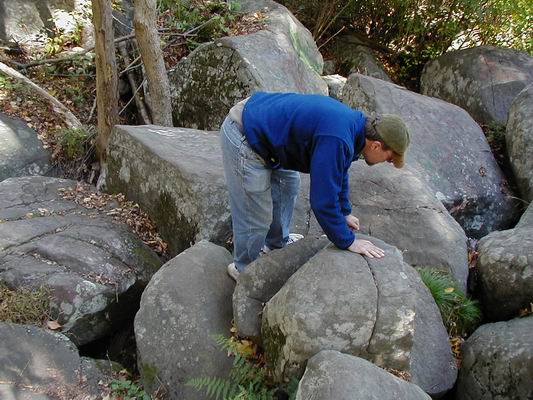
Boulders
We can see this even more clearly if we look at a boulder field where the gaps are big enough to climb into.
The final ingredient of our potting compost mix is loam - this is a term used to describe good soil. It will vary greatly from area to area from light and sandy to heavy stick clay. Light sandy loam is ideal for bulbs as it drains very well but it also loses the nutrients quickly; heavy clay retains the nutrients but can also hold on to too much moisture for most bulbs in pots.
Having looked at the ingredients we need to formulate a mixture that will provide a medium that will hold the plant upright while also making moisture, air and nutrients available to the plant.
We have had a supply of our own loam from a large heap made from the grass that used to cover large areas of our garden. As we gradually lifted more and more of the lawn to make way for planting we stacked the turf into a giant heap which rotted down to provide us, when rubbed through a 1cm grid, with a supply of nice fibrous loam.
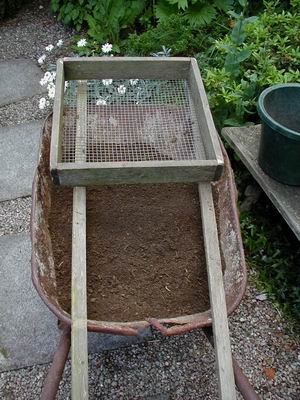
Loam
Our potting compost mix is, by volume, two parts of loam, two parts of 6mm grit and one part of leaf mould, to this ( 70 litres) we add a mug full of bone meal. If you have a heavy clay loam you will need more grit to open the mixture up and extra leafmould or equivalent will also improve your mix. The leaf mould helps add substance to our light sandy soil, it provides nutrients and minerals that were in the leaves as they fell from the tree plus the micro organisms present help release these trace elements and make them available to be taken up by the roots of the bulbs. The grit keeps the mixture open ensuring that free water can pass quickly through and that there are gaps for air so the roots can breathe. This is our 'free draining and moisture retentive compost'.
If you are new to the bulb log and want to catch up with the previous 110 logs, or if you would like to look back I have now got the logs for 2003/04 on a CD disc. Available for a nominal charge of £5.00, $10.00 US or 10 Euros.
E-mail info@srgc.org.uk for details of how to get your copy.
^ back to the top ^
|

